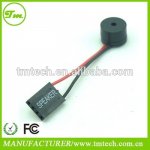musicforlife
Experienced Member
I have noticed that the pc speaker is clearly louder in my IBM 5150 than in my 286 although both uses same size speakers. Why is that? Is there a difference in speaker itself or is it "hotter signal" from the motherboard? More interestingly I received Hyundai Super-16T which is XT compatible machine and it's got similarly loud speaker as in IBM.

